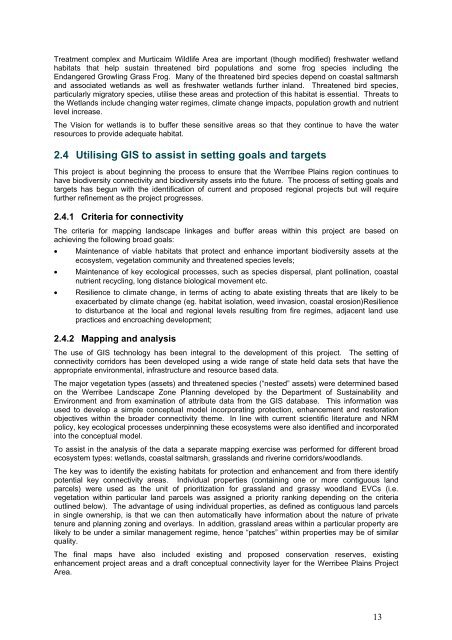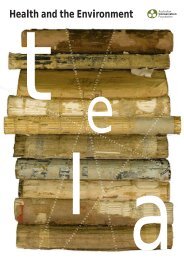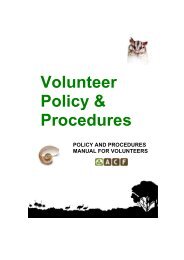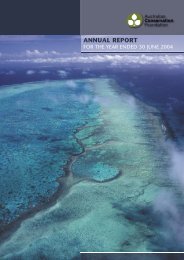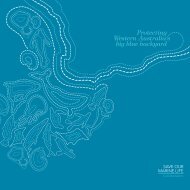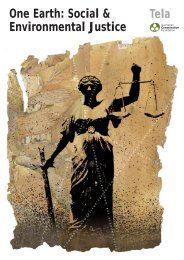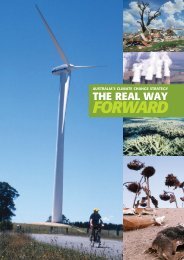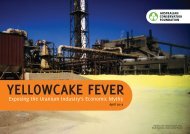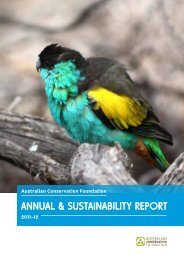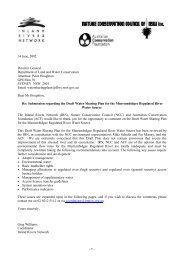Werribee Plains Biodiversity Connectivity Report - Australian ...
Werribee Plains Biodiversity Connectivity Report - Australian ...
Werribee Plains Biodiversity Connectivity Report - Australian ...
Create successful ePaper yourself
Turn your PDF publications into a flip-book with our unique Google optimized e-Paper software.
Treatment complex and Murticaim Wildlife Area are important (though modified) freshwater wetland<br />
habitats that help sustain threatened bird populations and some frog species including the<br />
Endangered Growling Grass Frog. Many of the threatened bird species depend on coastal saltmarsh<br />
and associated wetlands as well as freshwater wetlands further inland. Threatened bird species,<br />
particularly migratory species, utilise these areas and protection of this habitat is essential. Threats to<br />
the Wetlands include changing water regimes, climate change impacts, population growth and nutrient<br />
level increase.<br />
The Vision for wetlands is to buffer these sensitive areas so that they continue to have the water<br />
resources to provide adequate habitat.<br />
2.4 Utilising GIS to assist in setting goals and targets<br />
This project is about beginning the process to ensure that the <strong>Werribee</strong> <strong>Plains</strong> region continues to<br />
have biodiversity connectivity and biodiversity assets into the future. The process of setting goals and<br />
targets has begun with the identification of current and proposed regional projects but will require<br />
further refinement as the project progresses.<br />
2.4.1 Criteria for connectivity<br />
The criteria for mapping landscape linkages and buffer areas within this project are based on<br />
achieving the following broad goals:<br />
• Maintenance of viable habitats that protect and enhance important biodiversity assets at the<br />
ecosystem, vegetation community and threatened species levels;<br />
• Maintenance of key ecological processes, such as species dispersal, plant pollination, coastal<br />
nutrient recycling, long distance biological movement etc.<br />
• Resilience to climate change, in terms of acting to abate existing threats that are likely to be<br />
exacerbated by climate change (eg. habitat isolation, weed invasion, coastal erosion)Resilience<br />
to disturbance at the local and regional levels resulting from fire regimes, adjacent land use<br />
practices and encroaching development;<br />
2.4.2 Mapping and analysis<br />
The use of GIS technology has been integral to the development of this project. The setting of<br />
connectivity corridors has been developed using a wide range of state held data sets that have the<br />
appropriate environmental, infrastructure and resource based data.<br />
The major vegetation types (assets) and threatened species (“nested” assets) were determined based<br />
on the <strong>Werribee</strong> Landscape Zone Planning developed by the Department of Sustainability and<br />
Environment and from examination of attribute data from the GIS database. This information was<br />
used to develop a simple conceptual model incorporating protection, enhancement and restoration<br />
objectives within the broader connectivity theme. In line with current scientific literature and NRM<br />
policy, key ecological processes underpinning these ecosystems were also identified and incorporated<br />
into the conceptual model.<br />
To assist in the analysis of the data a separate mapping exercise was performed for different broad<br />
ecosystem types: wetlands, coastal saltmarsh, grasslands and riverine corridors/woodlands.<br />
The key was to identify the existing habitats for protection and enhancement and from there identify<br />
potential key connectivity areas. Individual properties (containing one or more contiguous land<br />
parcels) were used as the unit of prioritization for grassland and grassy woodland EVCs (i.e.<br />
vegetation within particular land parcels was assigned a priority ranking depending on the criteria<br />
outlined below). The advantage of using individual properties, as defined as contiguous land parcels<br />
in single ownership, is that we can then automatically have information about the nature of private<br />
tenure and planning zoning and overlays. In addition, grassland areas within a particular property are<br />
likely to be under a similar management regime, hence “patches” within properties may be of similar<br />
quality.<br />
The final maps have also included existing and proposed conservation reserves, existing<br />
enhancement project areas and a draft conceptual connectivity layer for the <strong>Werribee</strong> <strong>Plains</strong> Project<br />
Area.<br />
13


